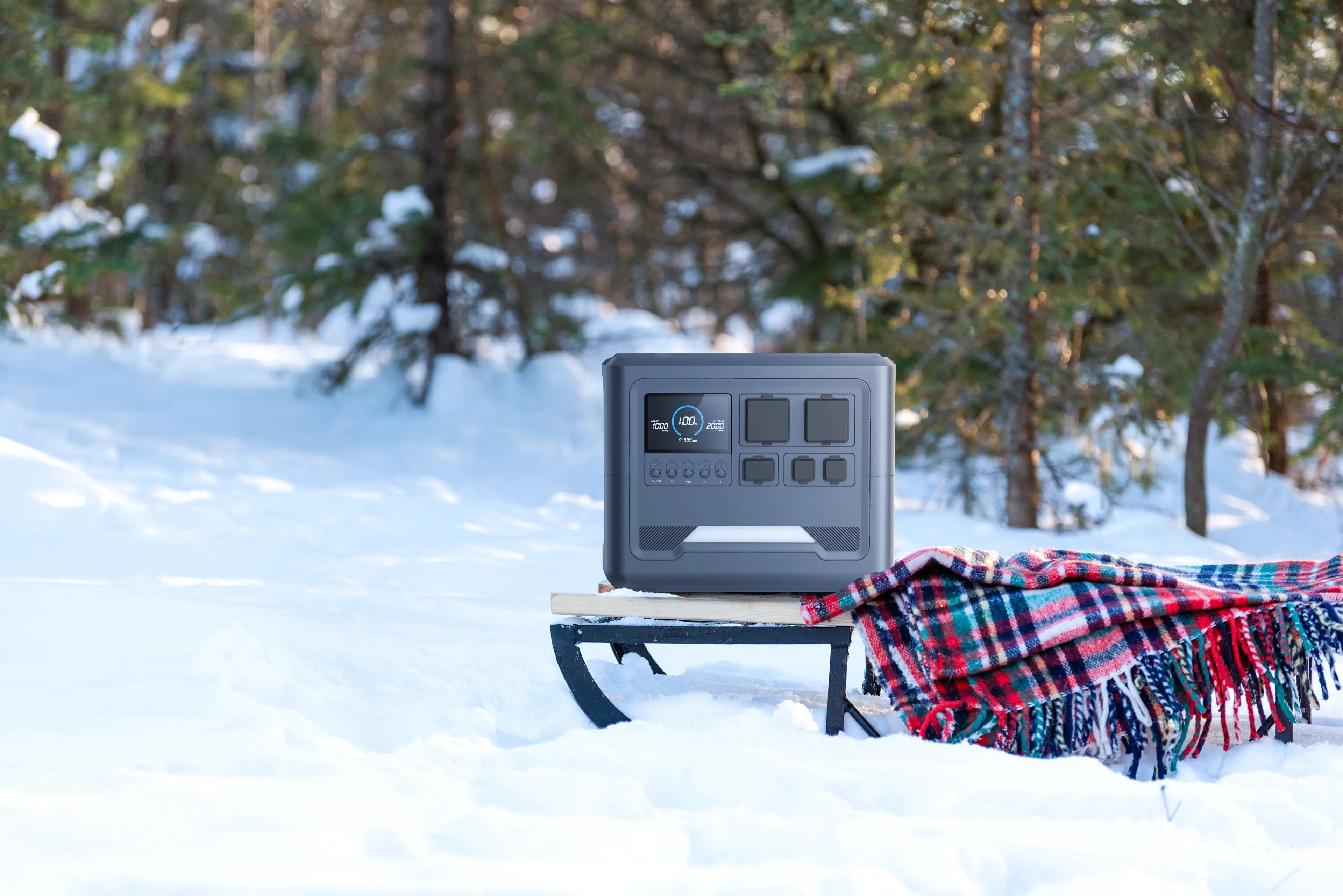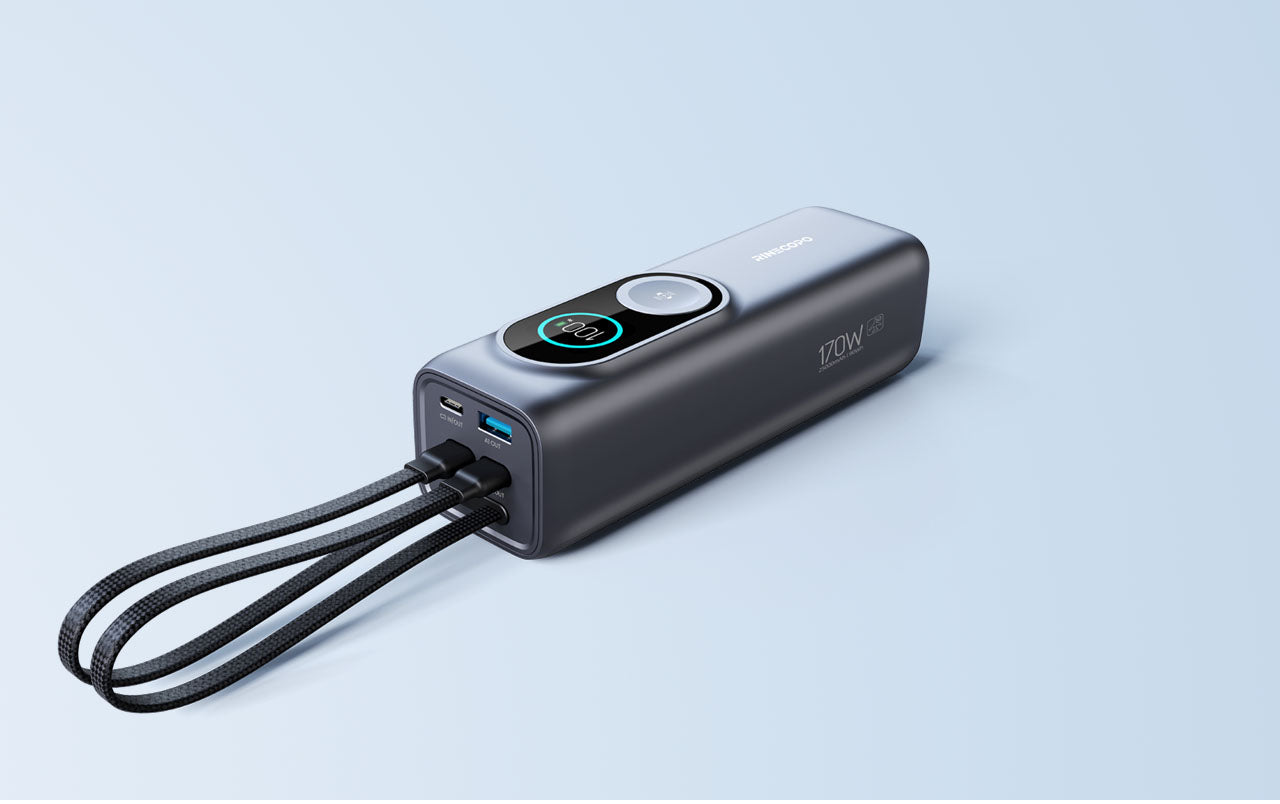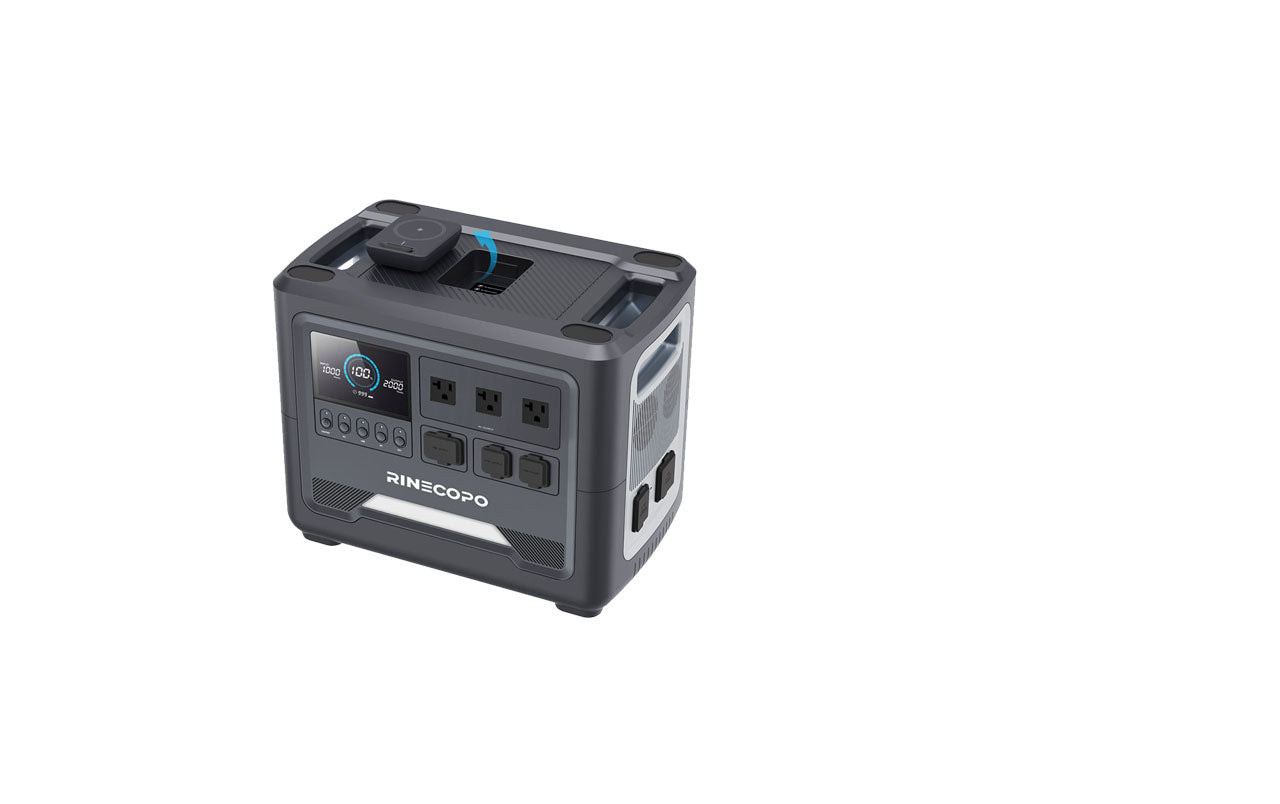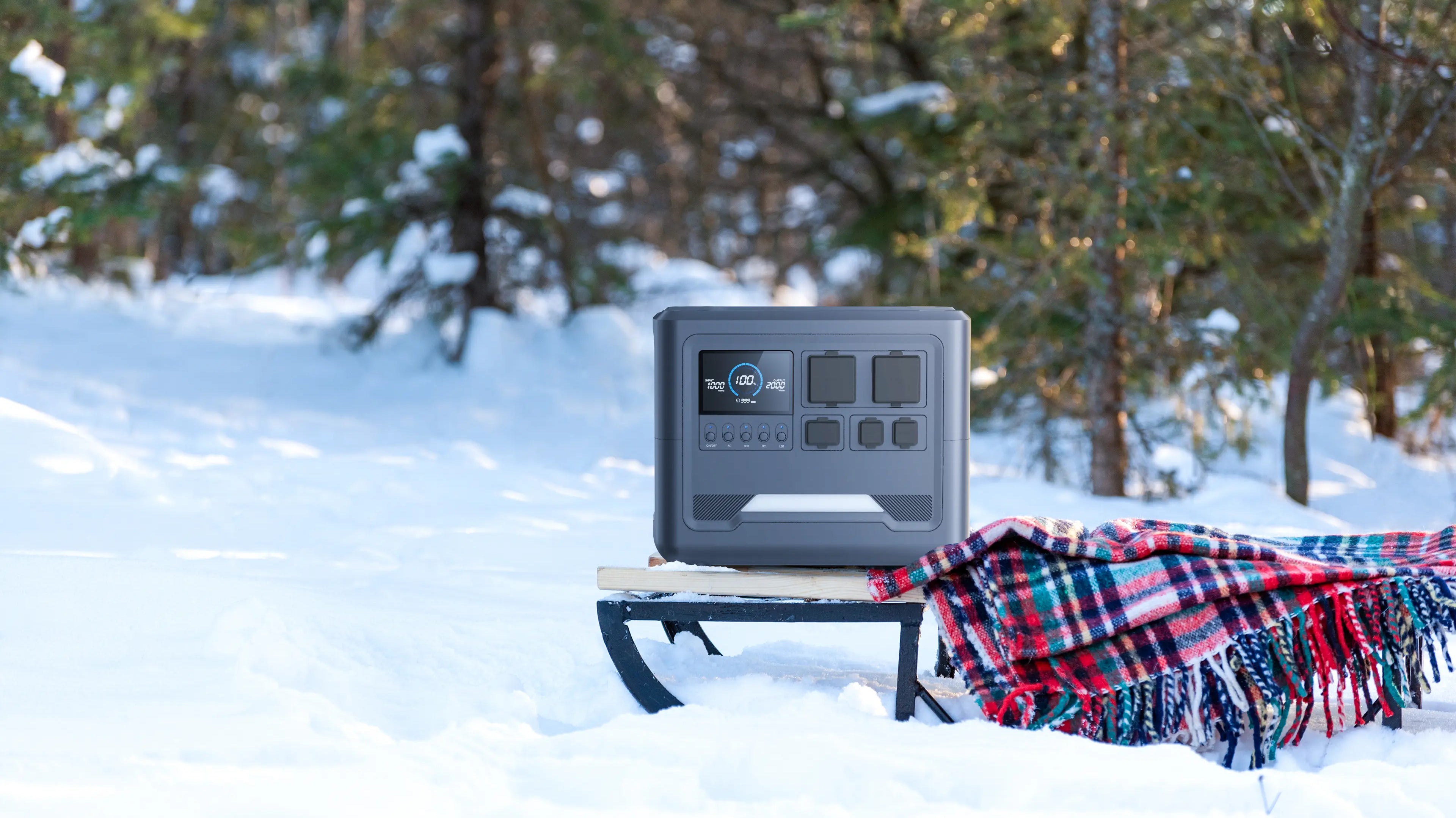
When winter rolls in across the U.S.—from snow-covered Rockies to the frosty Great Lakes—outdoor adventures don’t stop. Whether you’re camping in Yellowstone, tailgating before a football game, or road-tripping through the Pacific Northwest, one thing’s for sure: you’ll need reliable power.
But here’s the challenge—cold weather is tough on batteries. Your portable power station or power bank may lose capacity, charge slower, or even shut down unexpectedly when temperatures drop. Understanding how to protect and optimize your power source in winter can make the difference between a great trip and a frozen inconvenience.
Let’s dive into how to safely and efficiently use your power station in cold weather.
❄️ 1. Why Cold Temperatures Affect Battery Performance
Most portable power stations use lithium-ion or LiFePO₄ batteries, both of which rely on chemical reactions to store and release energy. When temperatures drop below freezing, those chemical reactions slow down, leading to:
-
Reduced charging efficiency
-
Shortened runtime
-
Slower power output
-
Possible cell damage if charged below 32°F (0°C)
In other words, your power station’s battery isn’t “broken”—it’s just cold. Keeping it within its recommended temperature range (usually between 32°F and 104°F / 0°C–40°C) helps maintain performance and lifespan.
🔋 2. Store Your Power Station Indoors Before Use
Before heading outdoors, make sure your portable power station is fully charged and stored in a warm indoor environment. A room-temperature battery holds a stronger initial charge and performs better once outside.
Pro tip: charge your power station indoors the night before your trip, and only bring it outside when you’re ready to use it. If you’re car camping or RVing, store it inside your vehicle overnight instead of the trunk.
🏕️ 3. Keep It Warm While in Use
When camping or hiking in cold conditions, treat your power station like you would your phone—keep it warm and protected. Try these methods:
-
Place it inside an insulated storage bag or blanket.
-
Keep it near a tent heater, but never directly on or too close to heat sources.
-
Use foam padding or thermal wraps to reduce heat loss.
-
If it’s compact enough, store it inside your sleeping bag overnight (especially small power banks).
Maintaining even a modest temperature difference can extend your battery life by hours.
⚡ 4. Avoid Charging in Freezing Conditions
This one’s crucial: never charge your portable power station or power bank below 32°F (0°C). Charging lithium batteries in freezing temperatures can cause lithium plating, a process that permanently damages the internal cells and reduces capacity.
If your power station feels cold to the touch, let it warm up indoors or inside your car before plugging it in. Some advanced models come with battery heating systems—a great feature for winter travelers.
🧤 5. Use Devices Efficiently in the Cold
Cold weather drains everything faster—your phone, laptop, and camera included. To conserve your power station’s output:
-
Turn off unused ports (USB, DC, AC)
-
Use energy-efficient gear like LED lights or low-watt heaters
-
Keep your devices inside warm clothing when not in use
-
Use short, certified cables to minimize power loss
Remember: the less power wasted, the longer your adventure lasts.
🚙 6. Plan for Charging Opportunities
If you’re on a long winter road trip, plan ahead. Use your car’s 12V socket, solar panels, or generator to recharge your power station when needed.
However, solar panels in winter need special attention:
-
Wipe off snow and frost regularly.
-
Tilt panels toward the low winter sun (around 60° angle works well in most U.S. regions).
-
Expect slower charging times—sunlight intensity drops by up to 50% in December and January.
🌞 7. After Use: Store It Properly
Once your trip is over, store your power station in a dry, room-temperature place—ideally between 50°F and 77°F (10°C–25°C). If you won’t use it for a while, keep it partially charged (50–60%) and top it up every three months.
Avoid leaving it in a freezing garage or car trunk. Cold storage leads to long-term battery degradation.
🧭 8. Ideal for Winter Camping and Emergency Backup
When power outages hit during winter storms, a portable power station becomes more than a convenience—it’s a lifeline. It can keep your phone, heater, or CPAP machine running for hours when the grid fails.
For winter campers, pair your power station with a small solar panel or car adapter, so you always have renewable backup power wherever your journey takes you.
🏁 Final Thoughts
Using a portable power station in winter isn’t just about endurance—it’s about preparation. Treat your battery with care, keep it warm, and charge it smartly. With these simple steps, you’ll have reliable power for every snowy hike, frozen lake, and cozy campfire moment.
Because in the heart of winter, power means freedom—and a warm cup of coffee by your side.
Recent Posts
Blog Tags
Top Solar Panel Efficiency Tips: How to Get the Most Out of Your Solar System
By optimizing your panel angles, keeping surfaces clean, improving cooling and wiring, and adding battery storage, you can maximize your solar energy output and enjoy more reliable, sustainable power every day.
Why Some USB-C Cables Don’t Work — And How to Fix It
One of the most common causes of cable failure is simple wear and tear. Constant bending, twisting, or yanking can break the internal wires, leading to unstable connections or total failure.
Signs of cable damage include:
-
Frayed or exposed wires
-
Loose or bent connectors
-
Intermittent charging or data loss
If you notice any of these symptoms, replace the cable immediately.
Cold-Weather Power Guide: How to Use Your Portable Power Station Safely in Winter
Why Cold Temperatures Affect Battery Performance
Most portable power stations use lithium-ion or LiFePO₄ batteries, both of which rely on chemical reactions to store and release energy. When temperatures drop below freezing, those chemical reactions slow down, leading to:
-
Reduced charging efficiency
-
Shortened runtime
-
Slower power output
-
Possible cell damage if charged below 32°F (0°C)
In other words, your power station’s battery isn’t “broken”—it’s just cold. Keeping it within its recommended temperature range (usually between 32°F and 104°F / 0°C–40°C) helps maintain performance and lifespan.





